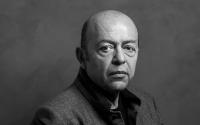Comon Dreams / Published on Sunday, February 5, 2006 by the Boston GlobeMark Feeney
Betty Friedan, the author and feminist activist whose 1963 bestseller, ''The Feminine Mystique," helped inspire one of the 20th century's great social movements, died at her Washington home yesterday, her birthday. She was 85.
Friedan died of congestive heart failure, according to a cousin, Emily Bazelon.''Gradually, without seeing it clearly for quite a while," Ms. Friedan wrote in the preface to ''The Feminine Mystique," ''I came to realize that something is very wrong with the way American women are trying to live their lives today."
That something, as Ms. Friedan wrote in her book's first paragraph, ''lay buried, unspoken, for many years in the minds of American women. It was a strange stirring, a sense of dissatisfaction, a yearning that women suffered in the middle of the 20th century in the United States. Each suburban housewife struggled with it alone. . . . She was afraid to ask even of herself the silent question -- 'Is this all?' "
What was afflicting American women was ''the feminine mystique," as Ms. Friedan memorably dubbed it, ''which defined woman only as husband's wife, children's mother, server of physical needs of husband, children, home, and never as person defining herself by her own actions in society."
The assumption that lay behind the feminine mystique was that women received their deepest fulfillment in the home as wife and mother.
The corollary of that assumption was that women betrayed their nature by pursuing an education or seeking professional success.
''That book changed women's lives," Kim Gandy, president of the National Organization for Women, which Friedan cofounded, said yesterday. ''It opened women's minds to the idea that there actually might be something more. And for the women who secretly harbored such unpopular thoughts, it told them that there were other women out there like them who thought there might be something more to life."
Twenty years after publication of ''The Feminine Mystique," Ms. Friedan described herself as ''awed by the revolution that book helped spark."
Its origins lay in Ms. Friedan's own experiences: as a suburban housewife and a mother of three, and, more specifically, in a lengthy questionnaire she had prepared for her Smith College classmates on the occasion of their 15th reunion in 1957.
Her aim had been to rebut the ''notion that education had fitted us ill for our role as women." When the set of responses she received ''raised more questions than it answered," Ms. Friedan found herself wondering ''whether it was the education or the role that was wrong."
Five years in the writing (she'd thought it would take one), the book her question led to was a passionate yet closely reasoned amalgam of polemic, journalism, sociology, psychology, and history.
The book's two most significant flaws -- its superficiality as social science and the fact that it spoke less to the condition of all women than to that of the affluent and well educated -- worked to enhance its effectiveness.
''The Feminine Mystique" was accessible as a more scholarly book would not have been. The fact that its thrust was less than universal made it that much more immediate for those readers whose experience it did relate to.
Coincidence or not, the feminist movement has from the outset been strongest among affluent, well-educated women.
Contributing to her book's power was Ms. Friedan's firsthand awareness of the mystique's debilitating effects.
A boyfriend had pressured her to reject an academic fellowship for the sake of their relationship, she had lost her job to a returning (male) World War II veteran, and been fired from a later post when she requested maternity leave after the birth of her second child.
Indeed, Ms. Friedan's experience of the feminine mystique even preceded her birth: Her mother, a journalist, had lost her job because the newspaper she worked for required that its female employees be single.
The book's impact, and that of its author, proved political as well as intellectual. ''The Feminine Mystique" made Ms. Friedan a recognized authority on women's rights. In 1965, she attended a meeting of state commissioners on the status of women.
Outraged by the federal government's unwillingness to enforce Title VII of the Civil Rights Act of 1964, which included a ban on discrimination on the basis of sex, Ms. Friedan helped found the National Organization for Women.
From 1966 to 1970, she was its first president. She also gave the organization its name. ''I wrote the word 'NOW' on a paper napkin," she later recalled. ''Our group should be called the National Organization for Women, I said, 'because men should be part of it.' "
That feminism was a movement to liberate men as well as women was one of Ms. Friedan's central beliefs. As she wrote in the 20th-anniversary edition of ''The Feminine Mystique," ''It seemed to me that men weren't really the enemy -- they were fellow victims, suffering from an outmoded masculine mystique that made them feel unnecessarily inadequate."
Ms. Friedan's emphasis on the inclusive nature of feminism became accepted wisdom in the movement and helped ensure that its influence was felt far beyond the hearts and minds of its partisans.
Even more than the 1960s civil rights movement, perhaps, feminism altered the way Americans -- men as well as women, children as well as parents, opponents of feminism as well as supporters -- led their lives and the assumptions they held about society.
''Every woman," as the short-story writer Grace Paley once noted, ''has had to swim in that feminist wave. No matter what she thinks of it, even if she bravely swims against it, she has been supported by it -- the buoyancy, the noise, the saltiness."
Buoyant, noisy, and salty were all words that might be said to apply to the wave's chief instigator. Ms. Friedan was a notably formidable woman, her small size and motherly plumpness belied by a raspy voice, commanding personality, and love of gesticulation.
Even without the impact of her writings, she might still have become a totemic figure in the feminist movement.
If instead of Susan B. Anthony's it had been the striking appearance of Ms. Friedan -- with her sleepy-eyed gaze and prominent nose -- that the US Treasury had put on the first dollar coin, the dollar bill might now be a thing of the past.
Betty Naomi Goldstein was born in Peoria, Ill., on Feb. 4, 1921, three months after the first presidential election in which women were allowed to vote. The oldest of three children, she grew up in Peoria, where her father, a Jewish immigrant, owned a jewelry store. Her mother, Miriam, was a women's page editor then a homemaker.
Betty Naomi Goldstein was valedictorian of her high school class, and her academic attainments brought her to Smith, where she was a casually acquainted with a woman a year behind her, Nancy Reagan (''one of the few women in college who was serious about a career," Ms. Friedan later noted with more than a touch of mordancy).
A psychology major, Betty Goldstein edited the student newspaper and graduated summa cum laude in 1942. She received a fellowship to spend a year studying psychology at the University of California at Berkeley. Then she was offered a second fellowship, the one a boyfriend urged her to reject. She did and, rejecting him, too, moved to New York City to work as a journalist with the Workers' Press, a labor news service.
In 1947, she married Carl Friedan, whose later success as an advertising executive enabled them to move to an 11-room Victorian house in suburban Rockland County. The couple divorced in 1969. Carl Friedan died in December, Bazelon said.
In a 1990 Globe interview, Ms. Friedan said, ''Ending the marriage was the most difficult thing I ever did."
Once her children reached school age, she began writing articles for such magazines as Redbook and McCall's -- leading disseminators, as Ms. Friedan later ruefully acknowledged, of the feminine mystique.
Perhaps the most striking example of the success enjoyed by ''The Feminine Mystique" was Ms. Friedan's being asked to edit an issue of Ladies' Home Journal within a year of the book's publication.
''I wasn't an organization woman," Ms. Friedan said of her time at NOW. ''I [had] never even belonged to the League of Women Voters," yet she threw herself into building NOW. She also, in 1968, helped found the National Conference for Repeal of Abortion Laws, which later became the National Abortion Rights Action League.
When Ms. Friedan gave up NOW's presidency, in 1970, the group had only 3,000 members, yet the work she had done helped lay the groundwork for an organization that now lists about 500,000 contributing members. One reason Ms. Friedan gave up the presidency was her increasing dissatisfaction with factionalism in NOW.
''I got to a point where I felt I had gone as far as I could with the movement and didn't want to get embroiled in sexual politics or attacking the movement's radical elements," she recalled in a 1993 Globe interview.
This dissatisfaction became widely publicized with the appearance of her third book, ''The Second Stage," in 1981. (Her second book, ''It Changed My Life," a semiautobiographical account of feminism's rise, had been published in 1976.)
In ''The Second Stage," Ms. Friedan voiced concerns that feminism might be seen as ostracizing women who chose marriage and motherhood, and urged the women's movement to look to home and family as "the new feminist frontier."
Conservatives hailed the book as a repudiation of her old views, and many of Ms. Friedan's allies attacked it. But it was more a case of the times having changed (with many of those changes brought about by Ms. Friedan and her writing) than of her having betrayed her principles: What she said was quite consistent with the arguments made in ''The Feminine Mystique."
With feminism flourishing, Ms. Friedan trained her sights elsewhere. She spent more than a decade working on ''The Fountain of Age" (1993), a manifesto for senior citizens.
''The talk was about 'them' as unproductive people, the people who get Alzheimer's and need nursing homes," Ms. Friedan said in a 1986 Globe interview, explaining what had attracted her to the subject. ''They used the same tone for the aging as they used to use for women. 'Keep them home and get them out of the way.' "
In addition to her writing and activism, Ms. Friedan lectured widely and taught. At various times, she held research fellowships at Harvard, Yale, and Columbia and served on the faculties of the University of Southern California, George Mason and Temple universities, and Queens and Mount Vernon colleges.
Still, she remained best known for her first book. ''When the first woman asked me, in 1963, to autograph 'The Feminine Mystique,' saying what by now hundreds -- thousands, I guess -- of women have said to me, 'It changed my whole life,' I wrote, 'Courage to us all on the new road.' Because there is no turning back on the road. It has to change your life whole life; it certainly has changed mine."
Survivors include her sons, Daniel of Princeton, N.J., and Jonathan Friedan of Philadelphia; and a daughter, Emily of Buffalo; nine grandchildren; a sister, Amy Adams of New York; and a brother, Harry Goldstein of Palm Springs, Calif.
The funeral will be held tomorrow at Riverside Memorial Chapel in New York, according to Bazelon.






